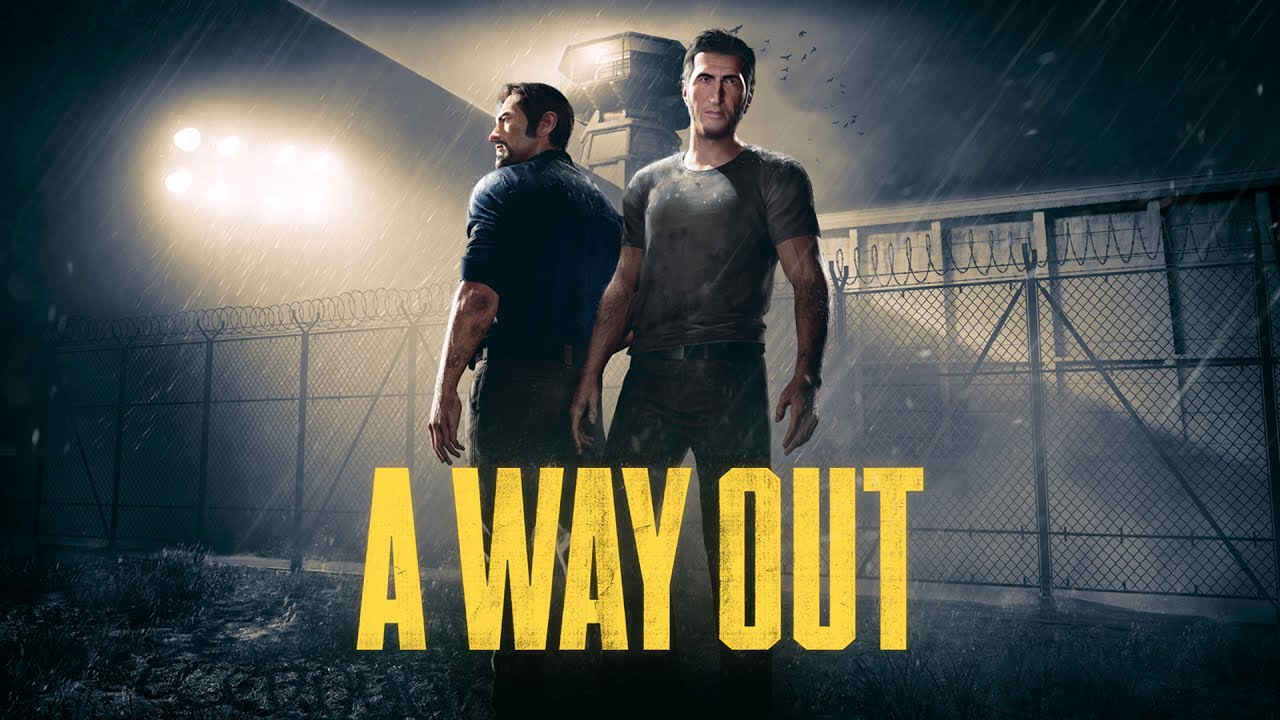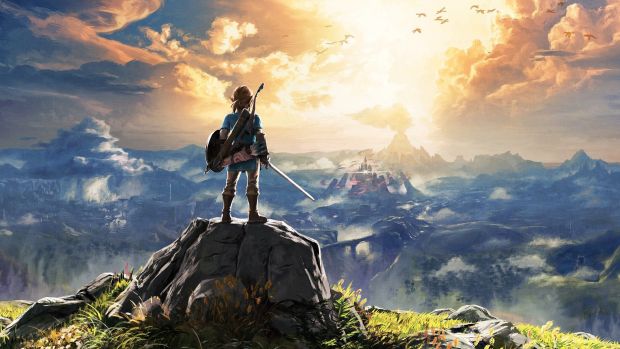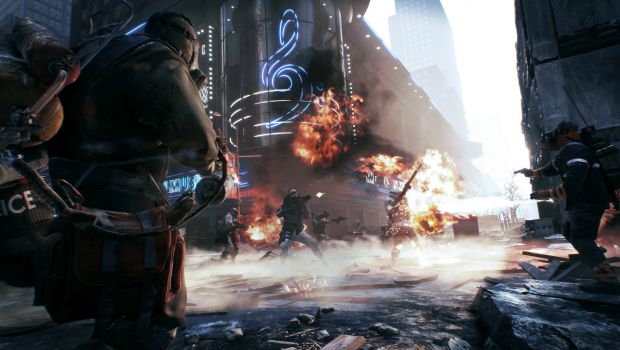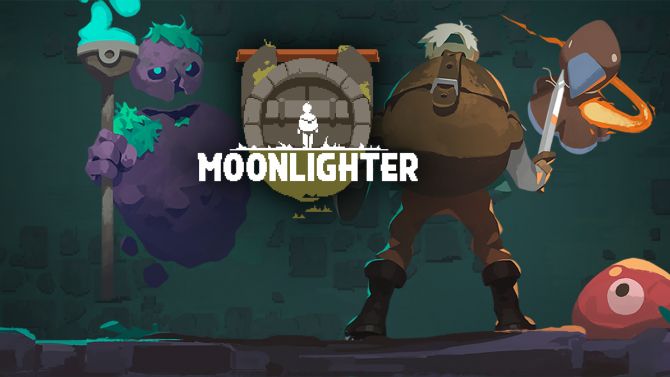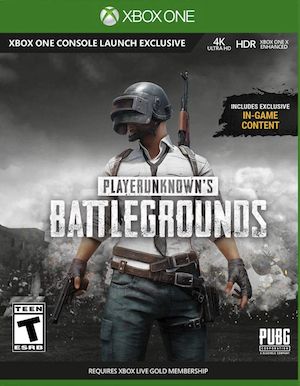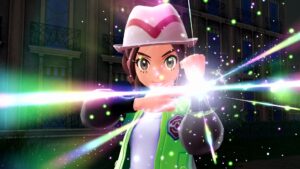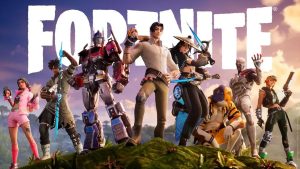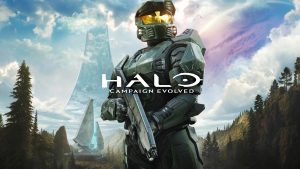
Most of you know Josef Fares as the creative mastermind behind A Way Out, Hazelight’s stellar co-op prison break adventure. Others may know him as “That guy who flipped off the Oscars on live TV”. Fares is all these things and while he’s not talking about upcoming games, visions for the medium and whatnot, he has some pretty interesting ideas about game length, content and replay value.
In a recent interview with VG247, Fares revealed that the playthrough rate for A Way Out was 52 percent on the PS4. This means that 52 percent of players experienced that console version actually completed the whole thing. Not bad, right? Fares disagreed though.
“Imagine someone like James Cameron going, ‘Oh, only 50% of the people walked out of the cinema, wow, that’s great!’ It’s insane. We have designer teachers who tell their students to focus on the first 40% of the game because the rest? People probably won’t see it.”
"However, one thing does come to mind about extending a game’s replay value: the end-game system."
“Why put all that effort in for nothing? We should see games as experiences,” says Fares. “It doesn’t matter how long they are. If it’s so common that people don’t play through the games, then why should we even comment on replayability and how long they are? Why should that affect score? It shouldn’t. When my publisher [asked about game length] I was like, ‘Why are you asking that? I’m not even going to answer that s**t’.”
Fares believes that artificially lengthening a game is pointless. If one’s creative vision accommodates, say, six hours like A Way Out did, is there really any merit to bloating it for the sake of “more” content? Obviously, there’s been plenty said about value for money versus replayability. I believe there can be a variety of games that satisfy both of these tenets. A game that delivers a compelling narrative within a short playtime (Inside), another that emphasizes replay value through secrets, different loadouts or just the sheer joy of its gameplay (Enter The Gungeon), so on and so forth. And make no mistake – there are tons of games that are incredibly replayable while packing an excellent narrative experience in +20 hours. Dark Souls 3, Bloodborne, Hollow Knight, Divinity: Original Sin 2, Nier: Automata, the list goes on.
However, one thing does come to mind about extending a game’s replay value: the end-game system. “End-game” is a term often used to refer to post-campaign content where players can continue levelling up, playing missions, ascending in power and grinding their way to glory. The term is often associated with action RPGs and loot-based games. The end-game in Monster Hunter World can consist of decoration farming, Hero/Warrior Streamstone farming, Tempered Investigations, Event Quests and experimenting with different weapon types.
Diablo 3’s end-game starts when the Torment difficulties unlock as players earn Gear Sets, partake in Greater Rifts, increase their Paragon Points, participate in Seasons for unique rewards, try out new builds (as the meta can shift pretty strongly at times) and so on. Those that want to break the monotony can take to the Set Dungeons, Challenge Rifts and Bounties if they’re so inclined. For all intents and purposes though, farming normal Rifts at Torment 13 and ascending higher and higher up the Greater Rift ladder is your end-game.
"Regardless, whatever you may quantify as an end-game activity, there’s no denying that more and more companies are starting to believe how necessary it is."
That being said, “end-game” isn’t something that means getting better and better loot or higher stats. While it’s possible to become stronger and earn better gear in The Elder Scrolls 5: Skyrim, the real end-game is exploring the world, uncovering its various mysteries, completing various side-quests, and of course, modding the heck out of the game. Add total conversions, entirely new areas, new storylines and more. Want to have a new starting prologue, new companions, light-sabers and Macho Man Randy Savage dragons? Have at it. The lasting appeal of Skyrim nearly seven years later can be attributed to its insanely dedicated mod community.
Then you have a game like Warframe, a constantly evolving free to play experience where you dictate your end-game goals. If you want to earn every single Warframe, both Prime and normal, either through farming or trading Platinum, go for it. Hitting the maximum Mastery Rank, building the coolest Dojo, decking out your ship with expensive decorations, unlocking all cosmetics, possessing the best mods – it’s all there. There is no proper end-game activity per say. You could hunt Eidolons, try to survive for as long as possible in Sanctuary Onslaught or create the most OP builds. The farming isn’t just a means to an end. In Warframe, the farming can be the experience with new toys to play with as the game continues evolving.
Everything has several tiers of farming though. Earning Platinum, for instance, can be done by farming Prime Parts to get Ducats to get Primed Mods to trade to others. Doing so at max mod rank requires tons of Endo, and millions of Credits for the actual trading and mod ranking. Many players deal in Riven mods and constantly farm Kuva Flood missions to keep trying for better stat rolls. Others partake in FashionFrame and try to have the best looking Frames out there. With the number of new features constantly added to Warframe, be it new weapons, Frames, open world environments like the upcoming Fortuna map or new mechanics like Railjack, there’s a ton of stuff to do. It’s not all tied together into one giant rolling end-game, however.
Let’s look at a game like Super Mario Odyssey, a non-loot based 3D platformer that centres around collecting. Upon completing the main story, you can revisit all the previous kingdoms to earn more Moons. These open up new activities, some generally easy (simply drop down into a specific area and claim the Moon) and others requiring a bit more skill (the second race against the Koopa Troopas in the Hat Kingdom, for example). The Mushroom Kingdom, Dark Side of the Moon and Darker Side open up as post-game kingdoms, offering tougher versions of existing bosses, new levels to explore and much more. The “end-game” for Super Mario Odyssey is collecting all the Moons as all the existing kingdoms being bumped up in difficulty to support this.
"An entire community has already been built on the insane things Soulsborne players have pulled off. At the end of the day, we tend to classify them as “challenges” or “feats” than an end-game that is specifically tailored to players."
Now, look at The Legend of Zelda: Breath of the Wild. Explore the massive open world and try to take pictures of everything, complete all the shrines, upgrade all armour and – if you’ve purchased the DLC – get a sweet new bike. Does one need to free all the Divine Beasts in order to defeat Ganon? Do you have to possess the Master Sword to beat the game? Is the DLC required to even enjoy everything the game has to offer? Not really.
In the case of Super Mario Odyssey and The Legend of Zelda: Breath of the Wild, it’s possible to complete the post-game kingdoms or defeat Ganon and call it quits. Similarly, look at the “end-game” in Assassin’s Creed Origins and The Witcher 3: Wild Hunt, which is to clear all side quests and earn all the collectables on the map. A player could very easily complete several side activities and the main story before moving on. Having top-tier gear isn’t required, at least in The Witcher 3. It just gives the player something to do. A little bit of a reward for their dedication, if you will.
Meanwhile, Dark Souls challenges players with multiple New Game Plus runs; Bloodborne has random Chalice Dungeons with even more bosses to conquer (and different modifiers to make these particularly torturous). “End-game” in the above cases can simply refer to all the additional side content that the player can complete. But when you think about it, making your own end-game goal is entirely possible. Earning all the weapons from the boss souls in Dark Souls 3? Defeating Orphan of Kos without taking any hits in Bloodborne: The Old Hunters? These could qualify as end-game activities. An entire community has already been built on the insane things Soulsborne players have pulled off. At the end of the day, we tend to classify them as “challenges” or “feats” than an end-game that is specifically tailored to players.
Regardless, whatever you may quantify as an end-game activity, there’s no denying that more and more companies are starting to believe how necessary it is. Bioware started mentioning the Elder Game for Anthem while also assuring players of higher-level activities to complete. We’re already hearing about map size and how everything is open from the get-go. Ubisoft talked about creating a deeper end-game for The Division 2 after the first game’s difficulties. It even promised free DLC including raids, the first being an eight-man raid due after launch. The post-game specializations further allow players to customize their builds, thus giving more reason to keep playing and the value attached to it.
"With the number of games being released and their respective costs, some people want a single game that they can sink hundreds of hours into. More than value, it offers a sense of investment and belonging."
At E3 2018, both games showcased characters that already had much of the best loot and hit max level. Games like World of Warcraft are constantly evolving their end-game systems to keep pace with changing times. Path of Exile constantly introduces new mechanics into its Leagues – the recent Incursion League is an excellent example and those gameplay systems can be added to the main game. Even Destiny 2 is undergoing a major end-game revamp in Forsaken, adding a dedicated zone for high-level players, a new Escalation Protocol activity, random rolls, record books and tons of gear to collect.
However, one thing I’ve never really stopped to ask is whether the end-game concept is sustainable or not. Many of you would look at that statement and scoff. More content that you enjoy? What’s wrong with that? After all, some players don’t need a heavy narrative structure to keep them going. It’s simply about having something to play with friends for as long as necessary. Furthermore, with the number of games being released and their respective costs, some people want a single game that they can sink hundreds of hours into. More than value, it offers a sense of investment and belonging.
The perception behind some games is shaped by their end-game. The Division was proclaimed a failure for the first few months thanks to a very meagre end-game. This was despite a fulfilling campaign and plenty of side content and regular activities to partake in. Destiny 2 was praised by many reviewers for the improvements to its story and world design but bombed terribly among fans due to its barren end-game, an issue that Bungie is still struggling to fix. In both cases, fans wanted a reason to invest in those games, especially when the gameplay systems carried serious flaws.
But even games with excellent gameplay systems like Diablo 3 and Monster Hunter World are lambasted, the former for making Rifts the only fulfilling activity to replay and the latter for the farming of specific tiers of Tempered Monsters. At the very least, Capcom tries to mix things up with new monsters, new layered armour, the Kulve Taroth Siege Quest (which has its own reward structure), Arch-Tempered Monsters and seasonal events like the Spring Blossom and Summer Twilight Festivals. Suffice to say that fans are getting kind of bored of the one-note end-game especially between the Lunastra update and upcoming Behemoth update.
"From a development perspective, one has to ask if it truly isn’t enough to have a great experience over 60 to 100 hundred hours and just be done with it."
The fact that many players never even engage in the end-game for these titles is one thing (thus feeding into Fares’ comment about working on so much that will never be appreciated by the majority). From a consumer perspective, having a compelling game to continue playing, endlessly repeating content that constantly rewards them is great. If you’re a hardcore fan of the gameplay, then even better.
From a development perspective, one has to ask if it truly isn’t enough to have a great experience over 60 to 100 hundred hours and just be done with it. Is Monster Hunter World really a lesser game if I beat the story and don’t bother with any Tempered Monsters, Deviljho, Kulve Taroth or Lunastra? Vice versa, if the end-game is so limited and not all that interesting, does it take away from the 50 to 60 awesome hours that the main story offered? Is Borderlands 2 a worse game because I stopped at the main story and DLC without partaking in True or Ultimate Vault Hunter Mode for higher tier loot?
To be perfectly fair, I can understand many criticisms that people have with the end-game systems in the above titles (and this article isn’t an argument against being entitled). You look at a game like Destiny 2 at launch and wonder how a developer could have so few meaningful rewards to effectively grind for, especially when the hook is the game being a looter shooter and the first game did a much better job at the end of its lifecycle.
However, I sometimes question the emphasis on systems that encourage experiencing the same select portions of content again and again. I’m feeling kind of burned out, grinding the same activities in Monster Hunter World to complete an Elemental Crit Bow set for each element just like I was burned out trying to get the perfect Shadow’s Mantle set in Diablo 3. Maybe it really is the loot aspect of an experience that makes the end-game problems that much more apparent. That’s probably why I can replay a game from scratch, enjoying its narrative, characterisation and mission design all the more. I can certainly appreciate players who have fun in the above games because of their loot-grinding appeal and finding new ways to play.
"Some developers love to provide more content for their fans. It’s a way to incentivize new players as well to join in on the fun. How much content is too much though?"
The games-as-a-service model could be another reason for so many titles pursuing some kind of “end-game” to work towards. New loot! New weapons! New enemies! New cosmetics! And hey, it’s all free so if you’re feeling generous, why not pay a bit for it? Such an approach isn’t the worst even with its set of risks – like publishers introducing all sorts of money-gouging practices. Besides, if development is becoming costlier, companies need to make more money and consumers want to feel more invested in specific titles, why not try to monetize that?
Developer intention is also something to keep in mind. Look at Moonlighter, an awesome overhead action RPG adventure where you sell the items found in these randomly generated dungeons to upgrade armour and weapons. This facilitates exploration in later dungeons and it’s possible to expand your shop to bring money in faster. After finishing off all five dungeons, what else is left? Well, just playing the game for fun. Suffice to say that Digital Sun is looking to add 50 more rooms, New Game Plus, a new tier of weapons called Dimensional Weapons, Amulets, Familiars, a custom game mode, mini-bosses, more item effects and Halloween decorations over the next four updates in 2018. As a fan of Moonlighter, I’m stoked but as someone who saw Digital Sun’s passion and love for what they’ve created, I have to wonder if it’s sustainable.
That goes for games like BattleTech, Enter The Gungeon and Frostpunk with their own post-launch updates. Frostpunk was an incredible game but because it was “short” by the city-building genre’s standards, it was lambasted by some. Enter The Gungeon’s community is pretty great but the bated breath with which they’ve been waiting for Advanced Gungeons and Draguns is concerning. It’s finally out on July 19th but one has to wonder how long it will last.
Some developers love to provide more content for their fans. It’s a way to incentivize new players as well to join in on the fun. How much content is too much though? Does a developer need to add an end-game system supported by hefty updates while fixing bugs, improving performance, addressing concerns and dealing with legions of fans angry that random weapon rolls (for example) aren’t a thing?
It’s not an easy question and certainly not a matter of too much or too less content. I love Monster Hunter World but I’m bored with it now, having felt that I’ve enjoyed everything the game has to offer. Do I believe that no new updates should ever be added to the game? Of course not. Do I think every single game needs to have an end-game system after delivering anywhere from 15 to 60 or more hours of awesome gameplay? No, but I can understand developers who want to continue making content, either out of passion or for their very livelihood.
"Even as players are spoiled for choice, one can’t help but wonder how much sense it makes to attach an end-game or some variation of it to so many different games across so many different genres."
I don’t know if there’s enough room for multiple games-as-a-service titles that promise constant updates, loot and end-game activities in the foreseeable future. There will be winners and losers in this battle as players struggle to keep up to date with Monster Hunter World, Anthem, Tom Clancy’s The Division 2, Destiny 2: Forsaken and its Annual Pass, Warframe, Path of Exile, World of Warcraft, Final Fantasy 14 and what have you. I mean, have you seen some of those content patches that Final Fantasy 14 keeps getting? It’s absurd even if there is a monthly subscription fee.
Video game developers – whether they work in art design, programming, sound design, production, graphics design or game design – are some of the hardest working, most passionate people out there. I’m not complaining and saying these end-game systems should be scrapped entirely while still having my free content and enjoying it too. This also isn’t a blame game where fans shouldn’t expect an end-game in their looter-shooters, especially when the developer in question hyped it up or anything else to do when the story campaign has wrapped. Every one should find success for their hard work, even if we don’t all agree on how well the results came out. However, it’s down to the market to decide whether so many end-game-focused titles can subsist in a single space. Think about it – the market couldn’t support more than two well performing hero shooters (Overwatch and Paladins). It’s also concerned about the Battle Royale bubble bursting, even as games like PlayerUnknown’s Battlegrounds and Fortnite: Battle Royale remain as popular as ever.
The MOBA space has been in constant flux with League of Legends and Dota 2 reigning supreme while other competitors falter. But then you also have something like Arena of Valor on mobile which is one of the most popular games in the world. EverQuest and Ultima Online shared space with numerous MMO clones just as well as World of Warcraft is sharing the market with Final Fantasy 14: Online, The Elder Scrolls Online and Guild Wars 2. Each follows its own monetization model with subscriptions, microtransactions and expansions playing some part or the other in their operation. Each is also constantly trying to add new features, offers and hooks to keep loyal players while attracting new consumers.
How will end-game systems in games with multiple years of free content fare, even as they dabble into microtransactions, expansions and other means of money-making? What ramifications will the Battle Pass model have on long-term investment, especially as more games opt to become more service-oriented? It’s hard to say but even as players are spoiled for choice, one can’t help but wonder how much sense it makes to attach an end-game or some variation of it to so many different games across so many different genres.
Note: The views expressed in this article are those of the author and do not necessarily represent the views of, and should not be attributed to, GamingBolt as an organization.








